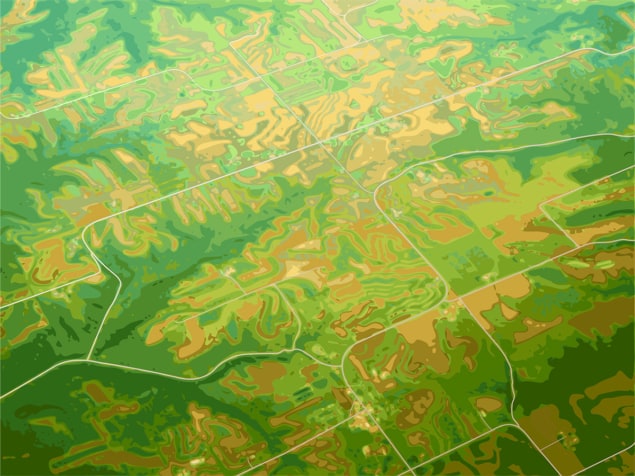
The thinking was that as climate changes, warmer temperatures in the north will kick plant growth off earlier in spring, boosting productivity and increasing the amount of carbon stored in vegetation. But this brake on climate change may not take place – new research has found that following warmer springs, plant productivity may decrease later in the season.
“The concern is that climate models used to predict future climate change impacts are not reflecting what the observations clearly show,” says Wolfgang Buermann of the University of Leeds, UK. “The earlier onset of spring was thought to aid plant productivity into the summer and autumn months. However, we can see that when there has been an early warm spring plant productivity pays the price later in the year. It appears that valuable resources needed for plant growth such as water are not available in abundance and when consumed early in the growing season are lacking later on.”
Buermann and colleagues looked at 41 million square kilometres of land north of the 30th parallel using 30 years’ worth of satellite images. In many areas, particularly in western North America, Siberia and temperate eastern Asia, plant productivity suffered later in the season.
“Northern regions have experienced substantial warming since the early 1970s, changing how many ecosystems function,” says Buermann. “There has been a limited understanding of the full impact of shorter winters and longer summers on plants until now. The availability of satellite images has allowed us to survey all of the world’s northern regions and get a full picture of how plants are reacting to the shifting seasons”.
Abundant plant growth increases water demand and evaporation, which could prevent plants having enough water later in the year. Certain plants may also have a naturally predetermined growth period, so that an earlier growth spurt results in earlier decay.
The findings indicate that current climate models underestimate the reduction in plant productivity and so overestimate the amount of carbon being absorbed by terrestrial ecosystems throughout the year.
“Based on future climate predictions, warmer springs are set to become the standard,” says Buermann. “There is a great need to make sure our models are accurately incorporating the effects of warmer springs on our ecosystems and how this in turn impacts climate change. Without this we cannot accurately predict how global temperatures may continue to change, the effect this could have on weather or the potential threat to public health.”
The satellite observations revealed the northern hemisphere becoming greener in spring but 13–16% per cent of the total land area showing adverse effects on plant productivity in later months. Some 5% of land area benefitted from the spring productivity boost later on. This contrasts with current carbon cycle models, which show adverse effects for 1–14% of land and beneficial effects for 9–54%.
“We already knew that the temporal course of plant growth has shifted significantly as a result of climate change,” says Matthias Forkel of the Vienna University of Technology, Austria. “These mechanisms are complicated and regionally different. Unfortunately, that changes the climate forecasts in an unpleasant direction. We have to assume that the consequences of global warming will be even more dramatic than previously calculated.”
The team reported the findings in Nature.
- This article is based on a press release from the University of Leeds, UK.



